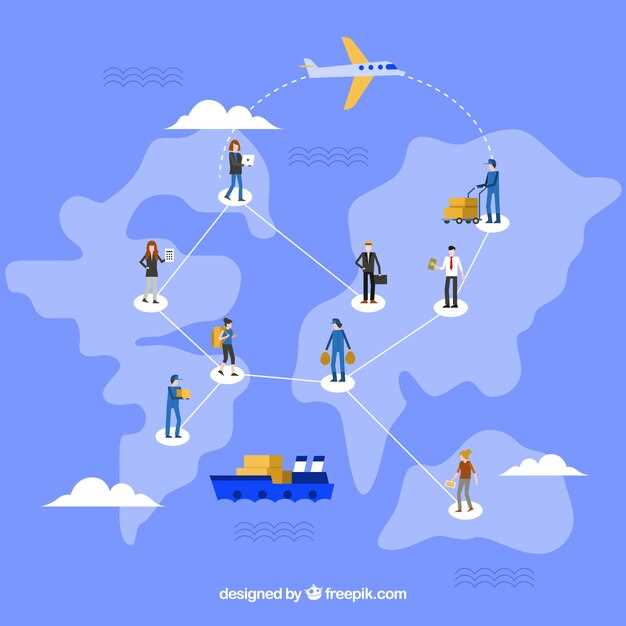How cross-country transport companies operate

In today’s globalized world, logistics plays a pivotal role in ensuring the smooth operation of cross-country transport companies. These businesses are responsible for moving goods across vast distances, navigating various regulations and operational hurdles. Understanding how these companies function is essential for anyone involved in supply chain management or interested in the transport sector.
The core operation of cross-country transport companies revolves around the efficient coordination of resources, routes, and timelines. They must meticulously plan every aspect of their logistics to ensure timely deliveries and minimize costs. This includes choosing optimal transportation modes, such as trucks, trains, or planes, depending on the nature of the cargo and the specific requirements of the journey.
Moreover, cross-country transport companies face the challenge of managing diverse regulations and customs requirements across different regions. This aspect of logistics is crucial, as mishandling can lead to significant delays and increased expenses. Therefore, a thorough understanding of local laws and international trade regulations is indispensable for these companies to operate effectively and maintain a competitive edge in the industry.
Understanding Cross-Country Shipping Regulations and Compliance

Cross-country shipping involves the transportation of goods across national borders, necessitating adherence to various regulations and compliance standards. These regulations are essential for ensuring the safety, security, and legal conformity of shipments. Each country has its own set of laws governing import and export activities, including tariffs, documentation requirements, and safety standards.
Importantly, shippers must familiarize themselves with the customs regulations of both the exporting and importing countries. This includes understanding duties, taxes, and necessary paperwork such as commercial invoices, bill of lading, and certificates of origin. Failure to comply with these requirements can lead to delays, fines, or even confiscation of goods.
Moreover, cross-country transport companies must stay updated on international trade agreements that could affect their operations. Agreements may simplify customs processes or reduce tariffs, impacting overall shipping costs. Understanding these agreements can provide a competitive edge in the logistics industry.
In addition to customs regulations, compliance with safety and environmental standards is critical. Companies must ensure that their shipping practices meet the necessary guidelines to protect against hazardous materials and uphold sustainability policies. This compliance protects not only the company but also the environment and public health.
Moreover, it is crucial for cross-country transport companies to implement robust tracking mechanisms. This not only aids in the efficient movement of goods but also ensures transparency and accountability throughout the shipping process. Real-time tracking helps keep customers informed and assists in complying with delivery timelines and regulatory requirements.
In summary, understanding cross-country shipping regulations and compliance is vital for successful logistics operations. By adhering to these standards, companies can streamline their processes, minimize risks, and enhance customer satisfaction while ensuring legal compliance across borders.
Optimizing Route Planning for Cross-Border Deliveries
Efficient route planning is crucial for cross-country transport companies engaged in cross-border deliveries. Effective optimization not only reduces transit times but also minimizes costs, leading to enhanced customer satisfaction and increased profitability.
One effective strategy is the use of advanced route optimization software that incorporates real-time traffic data, weather conditions, and road restrictions. These tools allow logistics managers to choose the most efficient routes, taking into account variables that can affect delivery times.
Another essential aspect is maintaining compliance with international regulations and customs requirements. A clear understanding of these regulations enables companies to avoid delays at borders, ensuring that goods are delivered promptly while adhering to legal standards.
Additionally, leveraging data analytics can significantly improve route planning. By analyzing past delivery data, companies can identify patterns, predict potential delays, and adjust routes accordingly. This data-driven approach fosters better decision-making and enhances overall operational efficiency.
Collaboration with local transport partners can also optimize delivery routes. These partnerships often provide valuable local knowledge of road conditions and effective shipping practices, facilitating smoother cross-border transit.
Lastly, considering the integration of eco-friendly practices can benefit the route planning process. Utilizing routes that optimize fuel efficiency not only reduces costs but also aligns with sustainability goals, appealing to environmentally conscious customers.
Managing Customs Clearance and Documentation for Seamless Logistics

Effective management of customs clearance and documentation is critical for seamless logistics in cross-country transport. Customs clearance involves the process of passing goods through customs so that they can enter or leave a country. This step is essential to ensure compliance with national regulations and to avoid delays that could affect supply chain efficiency.
Proper documentation is a cornerstone of successful customs clearance. Companies must prepare various documents, including commercial invoices, packing lists, bills of lading, and export declarations. Each document serves a specific purpose and must be accurate to prevent any disruptions in the logistics chain. Errors in documentation can lead to fines, confiscation of goods, or delays in delivery.
An organized approach to managing these documents is crucial. Utilizing digital tools can aid in automating the documentation process, ensuring that all paperwork is completed correctly and efficiently. Logistics management software can track required documents, alert teams to potential issues, and facilitate communication between stakeholders, including customs brokers and shipping companies.
Additionally, companies should stay informed about changes in customs regulations and trade agreements. Continuous education and training in customs procedures for logistics personnel can enhance understanding and compliance. Establishing partnerships with experienced customs brokers can also streamline the clearance process by providing expertise in navigating complex regulations.
Ultimately, effective management of customs clearance and documentation not only promotes seamless logistics but also enhances overall supply chain resilience. By prioritizing accuracy and compliance, companies can minimize delays, reduce costs, and improve customer satisfaction in cross-border transportation.

